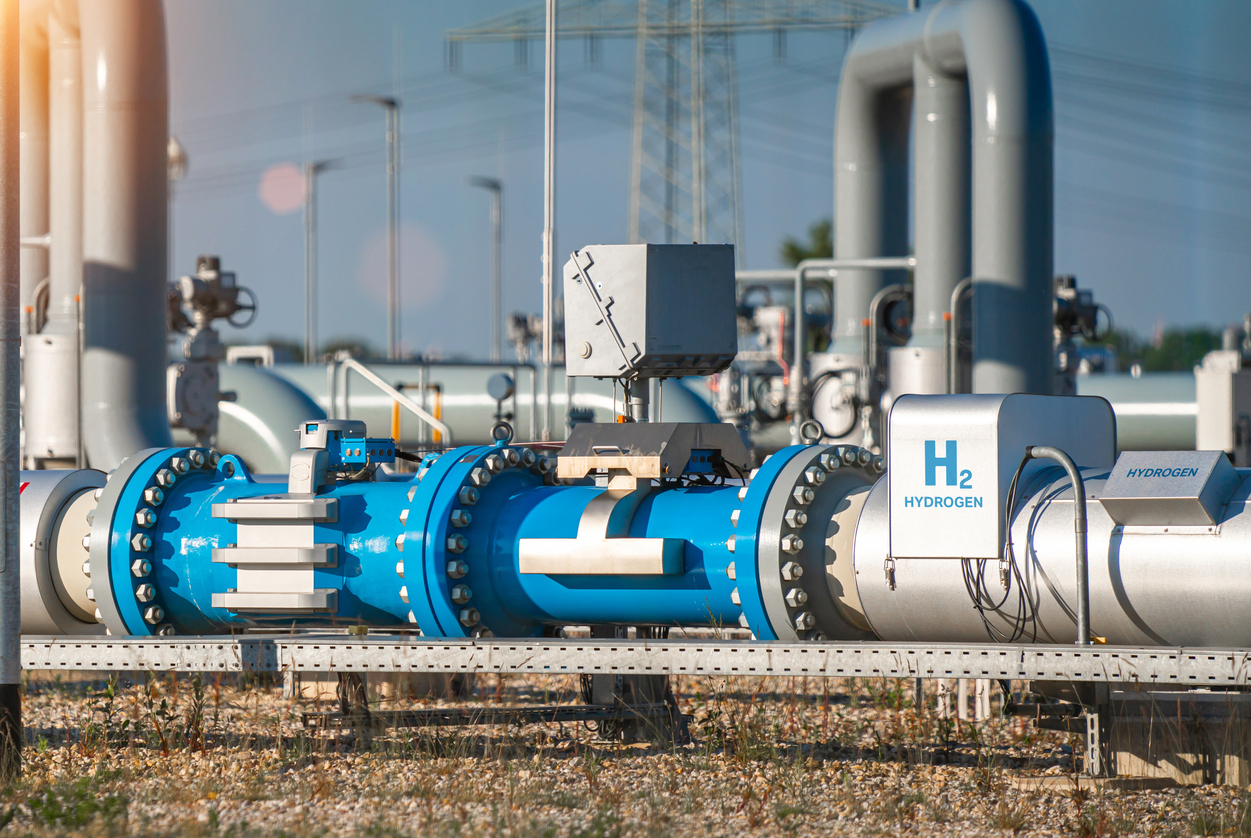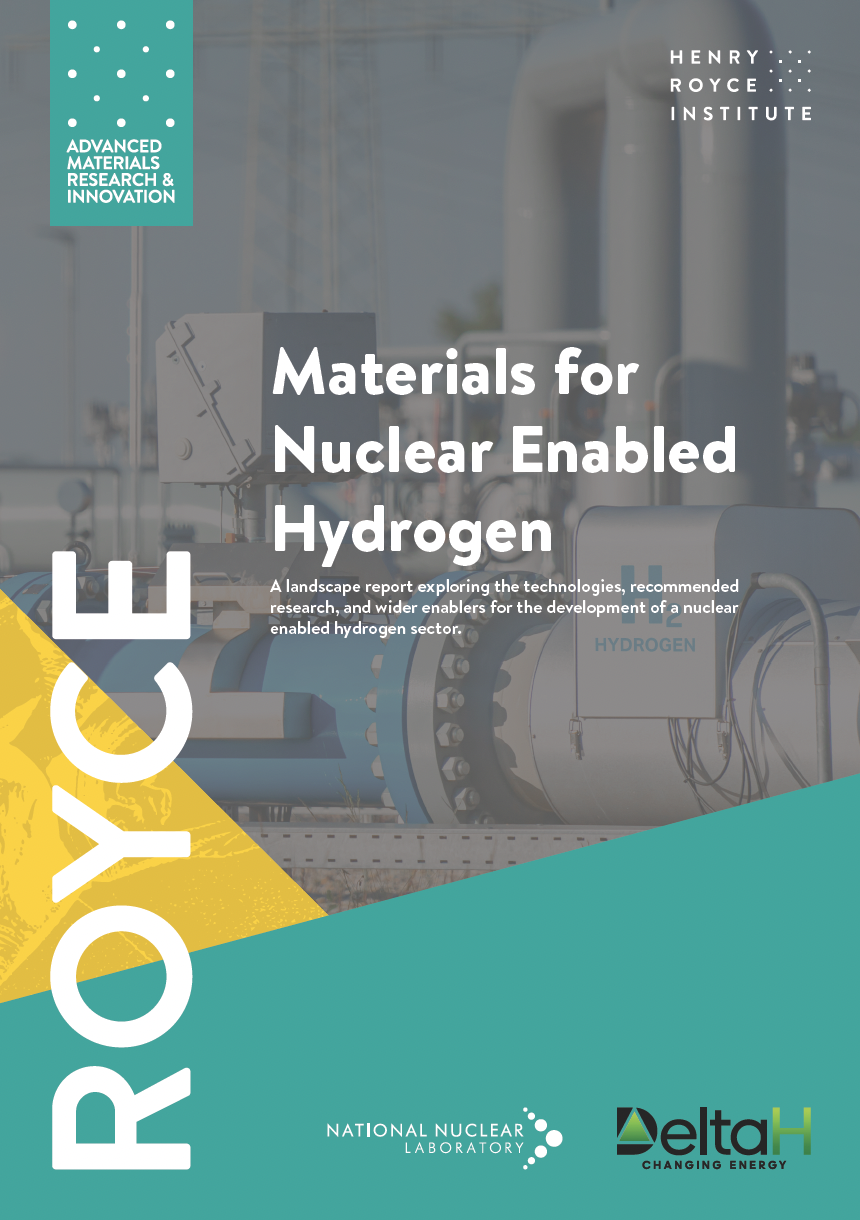The Henry Royce Institute for advanced materials has joined forces with Royce Partner, National Nuclear Laboratory (NNL), in compiling this latest Royce Landscape Report which provides an introduction to nuclear-enabled hydrogen production and an overview of the associated materials challenges.
NNL’s earlier Report on Nuclear Enabled Hydrogen highlighted that the production of zero-emissions hydrogen, from today’s grid connected nuclear, is possible using current technologies. This report also recognised that by using the process heat from a nuclear reactor, there is the potential to tap into existing technologies that could generate hydrogen with greater efficiencies.
This follow-on Landscape Report identifies a number of materials-related challenges which we would need to overcome in order to successfully transition to nuclear-enabled hydrogen production. These range from materials issues that could impact the performance of the technologies required to generate hydrogen from nuclear, through to the risks associated with coupling nuclear reactor heat outlets with downstream plants. The report concludes:
- The technical maturity for conventional electrolysis routes for hydrogen synthesis from grid connected nuclear is already high. The materials challenges that do exist are well covered elsewhere including in the Royce Materials for End-to-End Hydrogen Roadmap.
- For intermediate maturity technologies including solid oxide and PEM electrolysers there will be materials challenges associated with the non-nuclear aspects of the technology including scalability and lifetime.
- For low maturity, high temperature thermochemical hydrogen production, there needs to be clear targets around operating temperatures and target efficiencies so that the nuclear systems can be designed with maximum performance and reliability. The materials challenges associated with delivering these technologies are considerable.
Dr Paul Nevitt, Science and Technology Director at NNL, said:
“This Landscape Report recognises some of the technology gaps that will need to be addressed to support UK ambition for the role of nuclear beyond electricity and in the production of nuclear enabled hydrogen. It highlights the need for the broader materials research community to work together to advance this understanding, particularly regarding manufacturing and catalysis. I’m pleased that NNL have been able to play an important role in this Royce Landscape Report which I hope will stimulate interactions across the UK R&D base to help realise the potential of nuclear enabled hydrogen as part of an integrated UK net zero energy system.”
Professor David Knowles, CEO, Henry Royce Institute said:
“Significant progress is already being made towards the adoption of hydrogen worldwide, but we need to act quickly to ensure it becomes an integral part of the UK’s industrial future. In 2021 Royce commissioned its Materials for End-to-End Hydrogen Roadmap which identified the most valuable materials research areas to accelerate this transition to hydrogen as an energy vector, As a result a number of activities are now underway including routes to funding such as the Royce Hydrogen Accelerator.
“Nuclear enabled hydrogen is now gaining interest, with nuclear power recognised as a low carbon source of energy to help us meet our net zero targets in more diverse ways. This report will inform both short-term and long-term materials research into nuclear enabled hydrogen and it is set to spearhead research collaborations to enable progress in this nascent sector.”
The future role of Hydrogen
Hydrogen will be essential if the UK is to reach net zero emissions by 2050 and is set to provide an important pathway towards industrial decarbonisation. There has been much focus on direct electrification as the answer to lowering our carbon emissions, and of course with regard to transport, this is the most attractive solution for cars, vans and light goods vehicles. However for areas such as shipping, aviation and the heavier end of our manufacturing industries, an alternative energy vector is urgently required.
The capacity of green hydrogen to meet such demands has moved much further up the energy agenda – indeed the Committee on Climate Change (CCC) foresees an expansion of low-carbon hydrogen production equivalent to nearly a third of the current power sector by 2035, as outlined in the Sixth Carbon Budget.
Royce and NNL would like to thank Delta H for their endeavours in compiling the input to this latest Landscape report from a diverse range of stakeholders and literature sources.




